Displaying items by tag: ISORA
Big ISORA Fleet Gathers for M2 Buoy Race
- Dinah
- Dublin Bay
- Just Enough
- Lula Belle
- ISORA
- National YC
- irish sea
- English Mick
- Quite Correct
- Galileo
- African Challenge
- Lancastrian
- Tsunami
- Rebellion
- Orna
- Madam Wen
- Rollercoaster
- Raging Bull
- Miss Scarlett
- Team Windmill
- First of September
- Finnigans Wake
- Windshift
- Mojito
- Adelie
- Gwawr
- Yahtzee
- Legally Blonde
- Katanca
- Oystercatcher
- Obsession
- Sarnia
25 Entries for ISORA's M2 Buoy Race
25 sailing boats are entered for this Saturday's Dun Laoghaire – ODAS M2 Buoy – Dun Laoghaire race starting at 10 am. This is the eighth race of the ISORA series and it is organised in conjunction with the Royal Alfred Yacht Club. The start line will be located in Scotsman's Bay in the vicinity of DBSC 'Pier' mark between the mast of a committee boat flying the RAYC burgee and a start mark at the port end. An entry list and sailing instructions are attached.
'Lack of Interest' Forces Cancellation of Pwhelli Race
Roller Coaster Takes Overnight Race in a 'Virtual Calm'
From an entry list of 27 boats, 13 boats came to the line in Dun Laoghaire sailing for the 7th ISORA race writes Association Commodore Peter Ryan.
We had two new boats taking part in this race, “September Song” and “Windshift”. The course for the night was: Start – Muglins (S) – North India (P) – Muglins (P) – Finish. The whole race was going to be sailed against a foul tide.The forecast for the night looked perfect – 10kts South west and increasing during the night. It was expected that the fleet would be back in Dun Laoghaire soon after midnight. However this is not what happened!!!The race was started by Peter Beamish, Commodore of the Royal Alfred Yacht Club and Paul McCarthy.
The wind at the start was 14kts – east south east. This gave a beat to the Muglins. The wind direction was a perfect beat to North India. However, when the fleet was off Bray Head, the wind veered to a south west, favouring those boats who risked sailing under Bray Head.The fleet was well bunched as it rounded North India. “Roller Coaster” was the first to round with “Tsunami” snapping at it’s heels about 50m behind. The return leg was a tight reach with the wind decreasing.“Roller Coaster” led the fleet past Muglins and into Dublin Bay.
At this stage the fleet had become well spread out but “Tsunami” managed to keep up with “Roller Coaster”. After it rounded the Muglins it fell into the Dalkey Island “Hole” and “Tsunami” took advantage of this and passed it by sailing out into Dublin Bay.
This advantage was short lived when “Roller Coaster” again passed “Tsunami” at the back of the pier in a virtual clam before crossing the finish line at 03:23. “Tsunami” slunk across the line just over one minute behind “Roller Coaster”. The next boat to finish was “Lula Belle” over 80 minutes behind. The last boat finished at 06:01.“Roller Coaster” took line honours, 1st Overall and 1st in Class 1. “Tsunami” took 2nd Overall and 2nd Class1.
New comer “September Song” took 3rd Overall and 1st Class 2. “Rebellion” took 3rd Class 1 while “Lula Belle” took 2nd Class 2 and “Finnegan’s Wake took 3rd Class 2.The next race is on the 21st August with the ISORA / RAYC / Lee Overlay Day Race to the M2 buoy. Also, on the Welsh side, there will be a Day Race from Pwllheli on the same day.
Up to 20 expected for ISORA overnight
As many as 20 sailing boats could line out for the ISORA overnight race to the India North buoy tomorrow night. The race starts at 7.30pm, leaving the Muglins to starboard as the fleet heads south to the cardinal mark India North. The forecast is for light offshore breezes, waning further as the race progresses.
The list of starters is attached below, with those marked DNF not taking part. A Notice of Race is also attached.
The race is a 75-miler, and most returning boats should be back in Dun Laoghaire by morning.
ISORA Race Five Comes to Abrupt End
From an entry list of 27 sailing boats, 16 boats came to the line in Dun Laoghaire for the 5th ISORA race and first Sunday Race. Peter Ryan reports. It was hoped that this format would encourage those boats that regularly compete in the Dublin Bay and Howth racing and are reluctant to take part in ISORA as they would lose points in their Series. Unfortunately, this did not happen. We did not have any new boats competing.
The day looked ideal based on the weather forecast – 14kts West veering North West. With north-going spring tides the course selected was: Lambay (P)- Rockabill (S)- Kish (P) and to the finish. The course ensured that the fleet would have the tide with them all along the course. This was the only factor that remained constant.
The fleet left Dun Laoghaire in the 14kts westerly and made good progress across the bay towards the Bailey until it fell into a huge hole at the Bailey. For 30 minutes the only movement was the 1.5kt tide going north. Most of the fleet kept close to the shore while "Galileo" and "Tsunami" stayed out in the tide. At one time the shore side boats appeared to move again only to stop again. The wind filled in giving "Galileo" and "Tsunami" the advantage. "Intuition" was the lead shore boat and it also got the early wind. The wind had veered to the north-west and it was a fetch to Rockabill.
"Galileo" was first around Roackabill followed closely by "Intuition", Tsunami" and "Rebellion". The remainder of the fleet were well bunched close behind. Most of the run to Kish was in ideal sailing weather – moderate winds, sunshine, warm etc. This came to an abrupt end when the leaders were approaching Kish. A squall came through causing a rapid dropping of kites for the last mile. The same placings occurred at Kish as it was at Rockabill.
It was a beat to the finish. The wind had again dropped back to the 15kts after the squall. This left boats wondering if changing back up to the No.1's was required. The answer was not long in coming. A very strong squall hit the fleet with winds in excess of 28kts with driving rain sending boats scattering across Dublin Bay.
The first boat to cross the finish line was "Galileo", who only managed to take 2nd Overall and 2nd in Class 1. It was followed closely by "Intuition" who took 1st in both Overall and Class 1. "Tsunami" was next over the line to take 3rd in Class1 and 4th Overall. "Mojito" sailing two-handed took 3rd Overall and 1st in Class2. Another two-handed "Dinah" took 2nd Class2 while "Lula Belle" took 3rd Class2.
I would like to thank Larry Power of the National Yacht Club for doing the start and Chris Moore for recording the finishers. An "Après Sail" took place in the NYC after where the provisional results were announced.
The next race is on the 23rd July with the ISORA / RAYC / Lee Overlay Night Race to North India.
Report on Race 4 – Pwllheli – Causeway - Bardsey – India Nt - Wicklow – 5th June 2010.
From an entry list of 28 sailing boats, 14 boats came to the line in Pwllheli for the 4th ISORA race – 75 miles to Wicklow. Due to tidal difficulties the race start time was brought forward to 07.15. The weather forecast was for light winds increasing to Force 3 or 4 and veering North West. However a reasonable wind of 8kts in Pwllheli, early in the morning convinced the Race Organiser to hold the planned course to Wicklow. The wind held well for the beat to Causeway and for the tight spinnaker reach towards Bardsey. “ Galileo” was first around Causeway followed by “Tsunami”.
As the fleet approached Bardsey the wind dropped to virtually nothing. “Tsunami” had just enough wind to creep around Bardsey first while the remainder of the fleet wrestled with the possibility of the tide pushing them through the sound and around the wrong side of Bardsey.The wind picked up from the West for “Tsunami” after the rounding Bardsey and a fast passage to Wicklow was expected. This was not to be as the wind died again and a heavy sea mist appeared. There was little or no wind for 3-4 hours. When eventually the mist lifted and the westerly wind appeared again, only four boats were visible – “Tsunami”, “Raging Bull”, “Just Enough” and “Lula Belle”.
The four boats continued across the Irish Sea, within sight of each other, with the wind shifting all the time and disappearing at times. At approximately 02.30 on Sunday morning “Raging Bull” rounded Nt India followed by “Tsunami” and “Just Enough”. “Lula Belle” could not be seen. The wind picked up again and soon there was 14kts of wind from the North West and the boats roared towards the Wicklow finish.
The wind had not finished playing its tricks. The usual “Wicklow Hole” had formed within one mile of the finish line and the boats ground to a halt as they arrived there. Very tricky sailing was required to manoeuvre in the light winds and the then strong south going tide to the finish.The first boat to cross the finish line was “Raging Bull” at 04:01, who only managed to take 2nd Overall and 1st in Class 1. It was followed closely by “Tsunami” who took 2nd in Class 1 and 3rd Overall. “Just Enough” appeared over the finish line at 04:28 to take the Overall Win and Class 2. “Lula Belle” continued to battle the fluky conditions and finished at 12:25 to take 4th Overall and 2nd Class 2.
There were no other finishers.
The next race is next weekend 13th June, a Sunday Day Race from Dun Laoghaire. It is hoped that some new boats will use this race as a “taster” for ISORA. An Après Sail get together is arranged in the NYC after the race.
Results and Entry form race five is attached.
Start Time Changes for ISORA Yacht Race
Possible tidal problems in Wales have forced Irish Sea Offshore Racing Association (ISORA) Commodore Peter Ryan to change the start of the fourth sailing race across the Irish Sea back to Wicklow to 07.15 next Saturday in Pwllheli. More on the afloat forum here including race entries.
Planning to do the Round Ireland Yacht Race this month?
Planning to do this year's Round Ireland Yacht Race? You could do a lot worse than listen in to how Galway's Aodhan Fitzgerald put together a team of friends to win the 2008 race. Also on Afloat.ie are navigation tips from tactician Brian Mathews. There is little over a fortnight to the race start in Wicklow. Notice of race here. Get your crew together now for the 16th circumnavigation!
More on the Round Ireland Yacht Race:
Round Ireland Yacht Race 2010 Review
Round Ireland Yacht Race, Ireland's top offshore fixture
A Round up of 80 stories on the 2010 Round Ireland Yacht RaceISORA Get Ready to Race from Pwllheli to Wicklow
Just three weeks before the Round Ireland sailing race kicks off in Wicklow ISORA is preparing to race there in June 5th's race from Pwllheli in North Wales. When most regattas and events this season have struggled to raise entries the ISORA season has been marked with a dramatic rise, taking the offshore fleet to over 20 boats. Entry list and more details for he fourth race (inlcuding eve of race BBQ steaks in Wales) are on the ISORA thread on the Afloat forum here.

